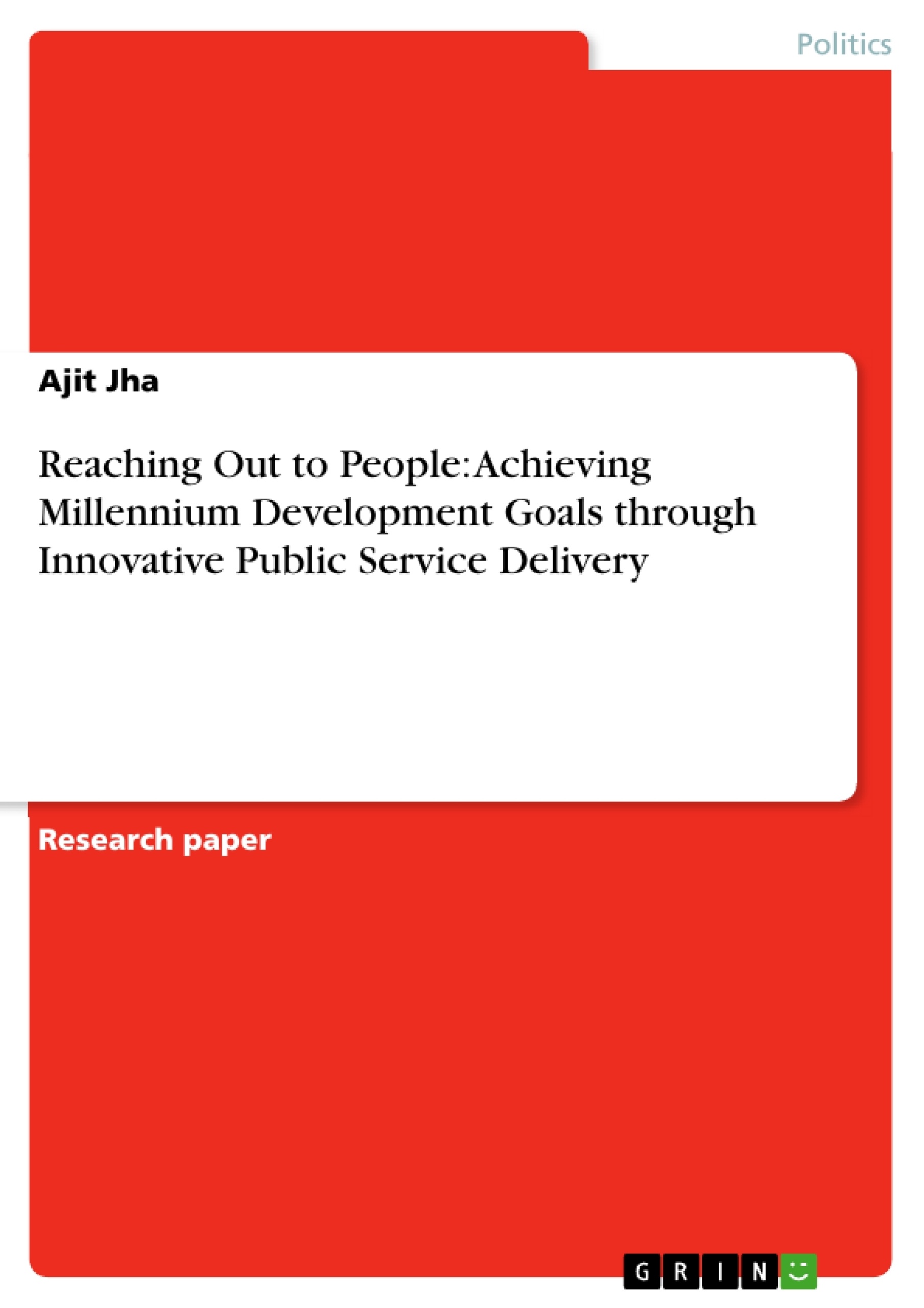The Millennium Declaration at the U.N in 2000 set ambitious targets to be achieved by 2015 against global poverty and hunger, illiteracy, gender inequality, child and maternal mortality, HIV/AIDS and other communicable diseases. However, there are several constraints and challenges in meeting these goals. The challenges are primarily of resources, infrastructure and the delivery mechanism. They are inter-related and the successful accomplishment of the MDGs calls for concerted efforts at addressing these challenges together. In other words, sound delivery mechanism can only be built on a strong infrastructure which again is not possible in the absence of adequate finances. A temporary aid over several years if utilized optimally can lead to permanent rise in productivity. In agriculture, the experience shows that with little cost of inputs in terms of fertilizer and high yielding varieties of seeds, the return is spectacular. For nations like India or even the other developing nations, healthcare challenges must be met through innovative science and technology mediated public delivery mechanism. Innovative approaches like e-health, m-health and telemedicine has the potential for improving seemingly intractable problems in health care provision such as limited access and uneven quality of care, as well as those attributed to cost. ICT could be used in fighting against sexually transmitted diseases and maternal and childcare through the dissemination of information and sensitization. However, ICT alone cannot provide the healthcare delivery, therefore, the best strategy in meeting the healthcare goals is to adopt an all inclusive approach in the strategic alignment of ICT and healthcare stakeholders.
Inhaltsverzeichnis (Table of Contents)
- Introduction
- The MDGs
- Ending Poverty Traps
Zielsetzung und Themenschwerpunkte (Objectives and Key Themes)
This document examines the challenges associated with achieving the Millennium Development Goals (MDGs) and proposes innovative approaches to public service delivery as a means of overcoming these hurdles. The main focus is on utilizing information and communication technology (ICT) to address issues like poverty, hunger, illiteracy, gender inequality, child and maternal mortality, and communicable diseases.
- The challenges of achieving the MDGs
- The role of ICT in public service delivery
- The importance of sustainable development
- The role of regional development strategies
- The impact of investment in agriculture, health, education, and infrastructure
Zusammenfassung der Kapitel (Chapter Summaries)
The introduction provides an overview of the MDGs, their origins, and the challenges associated with achieving them. It highlights the interconnectedness of issues such as resource scarcity, infrastructure limitations, and ineffective delivery mechanisms.
The chapter on "Ending Poverty Traps" focuses on the state of poverty in sub-Saharan Africa. It analyzes the factors contributing to poverty traps, such as population growth, lack of food production, land fragmentation, and inadequate infrastructure. It argues that overcoming these barriers requires targeted investments in agriculture, health, education, and infrastructure, with an emphasis on the potential of external aid to trigger sustainable growth.
Schlüsselwörter (Keywords)
The key terms and concepts explored in this text include: Millennium Development Goals (MDGs), public service delivery, information and communication technology (ICT), poverty traps, sustainable development, regional development strategies, agriculture, health, education, infrastructure, and external aid.
- Quote paper
- Ajit Jha (Author), 2010, Reaching Out to People: Achieving Millennium Development Goals through Innovative Public Service Delivery, Munich, GRIN Verlag, https://www.grin.com/document/194087



